TLG talks to legendary film pilot Marc Wolff
I managed to catch up Marc on a rare day off at his home in the South of France, to hear about the best aerial views in the world, the way digital effects have changed the game, vintage biplane flying on the Scottish Isle of Skye and what to do if the Peruvian Air Force steal your chopper fuel.
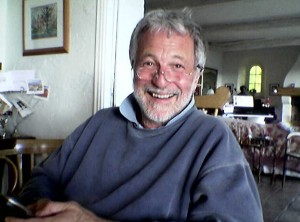 Marc (pictured) is a genuine living legend in film and TV. After a distinguished military career (at 21 he became the youngest Captain in the US Army, commanding a flight of 8 helicopters on a tour of duty in Vietnam, winning 22 awards of the Air Medal, and a Bronze Star) he became a commercial pilot in the UK. He soon discovered that flying for film companies was both fun and rewarding. Marc now has over 140 feature credits to his name, 13,000 flight hours in many different aircraft, and a million brilliant stories:
Marc (pictured) is a genuine living legend in film and TV. After a distinguished military career (at 21 he became the youngest Captain in the US Army, commanding a flight of 8 helicopters on a tour of duty in Vietnam, winning 22 awards of the Air Medal, and a Bronze Star) he became a commercial pilot in the UK. He soon discovered that flying for film companies was both fun and rewarding. Marc now has over 140 feature credits to his name, 13,000 flight hours in many different aircraft, and a million brilliant stories:
“I think every commercial helicopter pilot ends up doing a little bit of filming. Shooting aerial footage was more rewarding-creatively and financially, than say crop-dusting, surveying or ferrying passengers to Ascot. Then in 1973 I did a Renault 4 commercial with Hugh Hudson; we flew the length and breadth of France. It was fantastic! We virtually lived in a chopper for two weeks and the team (director, cameraman and pilot) bonded, and I thought, wow, I would love to do this full time.
But to make ends meet, Marc needed more clients:
In the early days, whenever I had a spare day, I’d be in London’s Soho-trawling up and down the streets, looking at names on door bells and buzzing anything that said film or productions. I used to ring about 30 door bells a day.
"I would have 10 seconds to give my pitch to the producer or receptionist, or whoever answered, and maybe once a day I’d get invited up for a cup of tea. I did that a fair few times and eventually got a few breaks. I also started badgering the folk at Pinewood, I got an early break; Hugh Hudson’s cameraman, Al Werry, was going to work on the Bond film, The Spy Who Loved Me and recommended me for a stunt flying role. I had to double the Lambs Navy girl, Carole Monroe, and dress up in a white pant suit with a long, dark wig, chasing a Lotus along a road in Sardinia. It was a hoot.”
Then a year later, Superman started production with the motto, ‘you’ll believe a man can fly’:
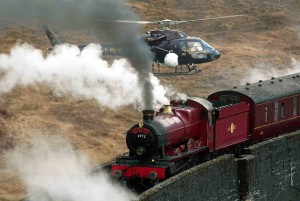 “I just had to work on it, but even with a Bond film under my belt, no one would return my phone calls. For a year I kept up the pressure and finally I got a break. They were having problems making the flying look real. I linked up with an aerial cameraman using a gyro- stabilized camera system that, when mounted on the helicopter, could duplicate speeds of up to 1000 miles an hour while flying within a few feet of rock faces and trees. From that point on I was off and running and went on to do four Supermans, three Star Wars and 10 James Bond films, and then all the Harry Potters.”
“I just had to work on it, but even with a Bond film under my belt, no one would return my phone calls. For a year I kept up the pressure and finally I got a break. They were having problems making the flying look real. I linked up with an aerial cameraman using a gyro- stabilized camera system that, when mounted on the helicopter, could duplicate speeds of up to 1000 miles an hour while flying within a few feet of rock faces and trees. From that point on I was off and running and went on to do four Supermans, three Star Wars and 10 James Bond films, and then all the Harry Potters.”
Marc’s precocity with aeroplanes, hot air balloons and helicopters of all shapes and sizes has seen him fly in mountain, glacier, arctic, jungle, desert and over-water operations in 52 countries around the world. I ask him if he has any favourite locations:
There are so many. Spitzbergen, also known as Svabard, in the Arctic Ocean, north of Norway, for the Bond film, Die Another Day, that was astonishing in it’s wild serenity.
"Landing on the frozen Arctic Ocean; the scale was just extraordinary. I got to see the northern lights in Iceland on another Bond and that was spiritual. Then there was the Hardangervidda, in the central ‘empty quarter’ of Norway, where we were shooting the ice planet Hoth for The Empire Strikes Back for six weeks in 1979. On days when it would snow and we couldn’t fly I would go out cross-country skiing and I would just turn a corner and discover a huge herd of reindeer.
Then there was a series of films for Disney’s Epcot Centre. On one, called Symbiosis, we went to Tahiti where I met my wife, Lin, who was working as an associate producer on the film; we flew over the reef system, the turquoise colours in the water, the dark green background mountains shrouded in mist, wow that was memorable.
And I suppose you can contrast that with Santa Claus: The Movie, shooting at twilight over Manhattan, flying under the Brooklyn Bridge. In the script, Santa takes an underprivileged kid for a sleigh ride around the Manhattan skyline at sunset. Magic hour lasts 20 minutes at best, so we were doing two hours of work per day, four weeks on the trot, to get enough shots to build up this one sequence. My wife and family were with me near Manhattan- it was an exciting, and fun time! Nowadays we could shoot it in half the time with the help of digital effects!”
Perhaps the rise of digital effects in big budget movies means less work for Marc? Not so, as he explains:
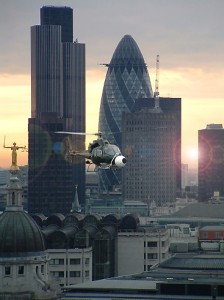 “Digital effects have certainly changed the jobs we do for the better. You might think we do less work as a result, but actually we do more. I suppose it’s because, with the help of VFX screenwriters, you can imagine and write anything and it can be filmed. For Harry Potter, you can have kids playing a game in the air on broomsticks; if you want to patch locations together like the structure of Gloucester Cathedral and the landscape of Glen Shiel and Glenfinnan in the Scottish Highlands, then you realise the dream, and I get more work. I love digital effects; it makes my job safer too. On Mission Impossible, I could fly in the channel tunnel without any risk because the tunnel structure was CG!”
“Digital effects have certainly changed the jobs we do for the better. You might think we do less work as a result, but actually we do more. I suppose it’s because, with the help of VFX screenwriters, you can imagine and write anything and it can be filmed. For Harry Potter, you can have kids playing a game in the air on broomsticks; if you want to patch locations together like the structure of Gloucester Cathedral and the landscape of Glen Shiel and Glenfinnan in the Scottish Highlands, then you realise the dream, and I get more work. I love digital effects; it makes my job safer too. On Mission Impossible, I could fly in the channel tunnel without any risk because the tunnel structure was CG!”
On Amelia, with Hilary Swank, Marc was hired to traverse Africa for two weeks, shooting a period aeroplane to re-create her attempted, round-the-world flight, from Cape Town through Botswana, Zimbabwe, and Zambia to Victoria Falls, with a tiny crew in a helicopter and a small plane:
“We were in Botswana on the border of Mugabe’s Zimbabwe. We could see a huge elephant herd roaming the plains across the border where we definitely did not have permission either to film, or fly. Zimbabwe has amazing wildlife but nobody gets to film it because of the political situation."
I pondered the risk and then just got really low, and scooted in without permission, literally under the radar, and got this great footage of these amazing animals.
I want to know if Marc has ever been involved in one of those productions where, despite best laid plans, things go wrong:
“I was booked to get an aerial shot of Macchu Picchu for a large format Disney documentary. We arranged to hire a helicopter from the Peruvian Army. While waiting for it to arrive in Cuzco, we got a call from the army to say they were stuck in Puno, near Lake Titicaca, and had run out of fuel; they asked if we could get them some. We sent down a truck with some barrels of fuel we bought at the airport. When they arrived in Cuzco we fitted the stabilized camera system and 65mm camera but the helicopter wouldn’t start.
The next day a specialist mechanic arrived; after a full day’s work it would still not start. Then spare parts arrived; still it would not start. Then the on the third day a Peruvian Air Force C-130 Hercules transport landed, we were asked to remove the camera system, they took the rotor blades off, and then pushed the helicopter, an Alouette 3, into the C-130, and bid us farewell, disappearing over the mountains to the west headed to Lima.”
However, the crew was not about to give up:
“Even though Macchu Picchu is on top of a mountain, an even bigger mountain overshadows it. The producer and director, who were waiting for us on site, organised a small, one-car, work train to travel through the night from Cuzco to the base of the mountain at Agua Calientes. We arrived at midnight and then hiked the heavy 65mm camera gear to the top of the mountain and got there just in time to shoot the sun rising over Macchu Picchu with its’ spectacular jungle backdrop. It was a bit of a kick-bollock-scramble, but we got an amazing shot…only not from a helicopter.”
There must have been a few dicey moments over the years?
“A few years ago we were scouting a volcano called Lengai in Tanzania on the second Lara Croft film. Mount Lenagi is 11,000 feet high and is sacred for the Masai people; it catches the moist winds from the sea, and builds up rain clouds, depositing the rain on their farmlands in the Serengeti. The mountain has an active crater that is an incredible sight. The plan was to drop a recce party on the summit. I was along as a co-pilot to learn the area.
The air is very thin at the top so the pilot could only carry two people up to the summit at a time. We were 70 miles from the nearest road with two bottles of water between us. I was waiting at the bottom with the line producer, Chris Kenny, when the helicopter disappeared behind the summit and we saw a large puff of smoke.
“What is that”, Chris said. “Well govenor”, I replied, “either the helicopter has crashed or the volcano has erupted, either way it doesn’t look great for us.” It turned out the helicopter had crashed- the pilot got caught in a down draft, it just ran out of power, the skids broke on landing and it rolled over. It was really lucky nobody was hurt. Better than the volcano going off though, right?”
Marc remembers vividly his time flying during the shoot of My Life So Far, which filmed on the Isle of Skye off Scotland:
“The west coast of Scotland is notorious for wild, windy weather. We were shooting a biplane sequence and were delayed by the weather; the pilot flying the biplane had to leave. I had been flying the camera helicopter but couldn’t find another biplane pilot. I decided to fly the biplane myself and organised another pilot for the helicopter. Having not flown a biplane before I had about 30 minutes of instruction in it doing take-offs and landings in a local farmer’s field. The next day the weather broke and we had this amazing day flying in the Cuillins, in the south west corner of Skye, with sheer-faced cliffs that rise out of the sea up to 2600ft. They are both foreboding and frightening to someone flying a tiny, 60-year-old, fabric-covered, wooden biplane. The weather there can so easily tear it to shreds, but conditions were perfect. I felt like an eagle. I was utterly awed, and I felt so fragile at the same time. It was both an exciting and humbling experience.”
 In 2005, Marc’s career took off in a new and exciting direction. He has managed the rare leap from flying, co-ordinating and directing aerial units to second unit directing. Last year he directed the second unit on the forthcoming movie Unknown starring Liam Neeson and Diane Kruger. His job of motivating and extracting the talent from 110 cast and crew through a punishing schedule of action scenes was both exciting and challenging:
In 2005, Marc’s career took off in a new and exciting direction. He has managed the rare leap from flying, co-ordinating and directing aerial units to second unit directing. Last year he directed the second unit on the forthcoming movie Unknown starring Liam Neeson and Diane Kruger. His job of motivating and extracting the talent from 110 cast and crew through a punishing schedule of action scenes was both exciting and challenging:
“We shot at night in the middle of winter on icy snow-covered streets. We ran car chases through central Berlin, crashed a van out of a multistory car park and a car off a bridge into the icy River Spree. It’s going to be a fantastic piece of work for my reel, with a great script, the film is a real thriller with a twist at the end.”
Does Marc ever want to direct a whole movie?
“Actually I’ve been giving that some thought of late. I’ve had a few opportunities in the past to direct commercials but the flying and travel has been so much fun, it’s been distracting. Working with so many of the great directors: Spielberg, Kubrick, Ridley and Tony Scott, Mike Nichols, George Lucas, Oliver Stone, Michael Apted, Wolfgang Petersen, Taylor Hackford, Hugh Hudson, Gillian Armstrong, Martin Campbell, Mike Newell to name a few, has been inspirational and I’ve learned a lot.
I love composing images and telling stories with pictures. I also enjoy being in charge of and motivating a large, creative team of people. I have recently taken courses to learn how to speak to, and work with, actors, including an acting course, a course on improvisation and one on directing to get the right performance.
 In the last year I’ve taken courses in editing, screenwriting, cinematography, camera operating, storyboarding and a number of other technical directing courses. Now I need to start pounding on doors again! It is like starting all over; we get pigeon holed in life. Everyone knows me as a pilot and aerial co-ordinator but not as a director, but I believe I have the talent to succeed as a director. What I need to do now is convince others and create the opportunity. It’s great fun though, challenging for sure, but I feel like I’m 25 and just starting out in life again, full of bundles of energy and enthusiasm. Life is a joy.”
In the last year I’ve taken courses in editing, screenwriting, cinematography, camera operating, storyboarding and a number of other technical directing courses. Now I need to start pounding on doors again! It is like starting all over; we get pigeon holed in life. Everyone knows me as a pilot and aerial co-ordinator but not as a director, but I believe I have the talent to succeed as a director. What I need to do now is convince others and create the opportunity. It’s great fun though, challenging for sure, but I feel like I’m 25 and just starting out in life again, full of bundles of energy and enthusiasm. Life is a joy.”
I realise after talking to Marc for an hour or so that, with his 13000+ hours of flight time seeking out beautiful locations on seven continents, with the exception of the Apollo astronauts, he must have seen a range of natural sights unsurpassed by anyone on Earth. I want to know if the effect of amazing natural landscapes ever wears off.
“Never! The sheer majesty of the Earth, and the range of amazing, beautiful landscapes are just awesome. It’s mind-blowing, I never get bored of it. I am supremely lucky to have seen so much. It is, simply, the best job in the world, hands down.”
Images courtesy of Marc Wolff.
Related Posts
- Aerial filming in the UK
- Drone filming & the freedom of unmanned flight
- TLG talks to James Bond location filming veteran Callum McDougall
- The Location Guide talks to Lieutenant Colonel Glen Roberts, Director of the United States Air Force Entertainment Liaison Office
- Partizan travels from Mexico to Alaska for Honda and films with a 360-degree camera
- Is Location Manager Emma Pill the real 007?
- Skyfall’s Callum McDougall takes James Bond on location to Turkey
- Sherpas Cinema films aerial vistas for FlyOver Canada tourism ride
Related posts:
Comments
Not Logged in
You must be logged in to post a comment
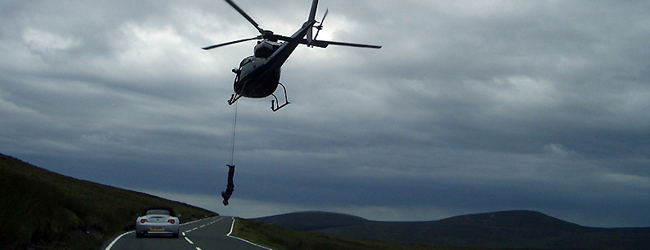



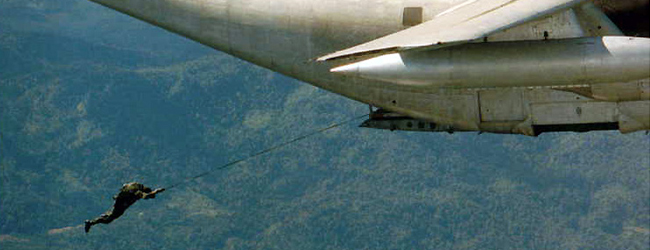

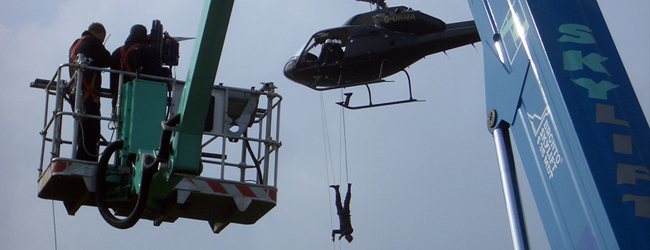
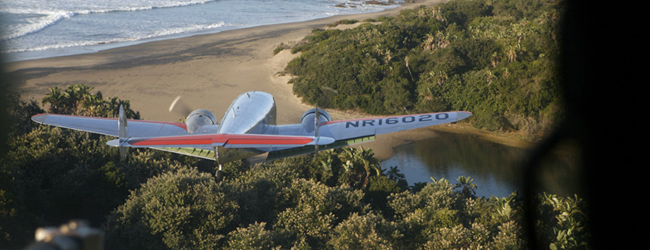


There are 1 comments